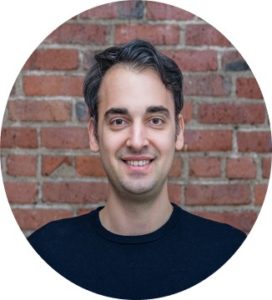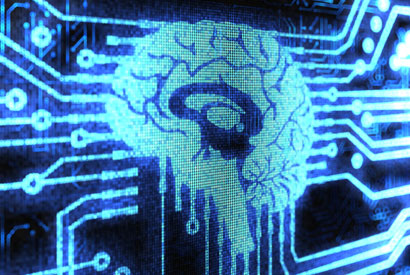Interview with Dr. David Stanley - Computational Neuroscience

Dr. David Stanley
Computational Neuroscientist and Machine Learning Engineer at Neurable (Boston, USA)
Dr. David Stanley is a Computational Neuroscientist and Machine Learning Engineer at Neurable (Boston, MA). Dr. Stanley has completed his postdoctoral research from Boston University and his Ph.D. from the University of Florida.
.
BT
We have to start with the basics here – What exactly is Computational neuroscience?
DS
Computational neuroscience, generally speaking, involves the use of mathematical models to study the brain. There are several different subtypes of computational neuroscience that differ in the types of models, the number of neurons, and their underlying philosophies. Some computational neuroscientists focus on modeling individual neurons or even parts of a neuron in exquisite detail, whereas others build models of large neural networks consisting of millions of neurons.
BT
What got you interested in Computational Neuroscience? Is this something that you always wanted to do?
DS
As a teenager I read the book The Enchanted Loom: Mind in the Universe by Robert Jastrow, which helped me to realize that the brain is something we can understand, at least at a high level, and that we have already made significant strides in this direction. Later, during my last year of college, although I was specialized in engineering physics, I took a course on cellular bioelectricity and neural engineering. I realized that my physics background was highly applicable to this field, and decided to pursue master’s studies in computational neuroscience (with the same professor who taught that course). During my PhD, I read On Intelligence by Jeff Hawkins, which renewed my interest in the intersection of neuroscience and artificial intelligence.
BT
What are some of the skills that an aspiring computational neuroscientist should master to be successful in this field?
DS
A strong quantitative background, knowledge of mathematical fundamentals, and good programming skills are important to being successful in computational neuroscience. Beyond this, however, a large part of computational neuroscience involves imagining how a neural system might work in order to produce a particular behavior and breaking down the system into components that can reproduce that behavior. Hence, a good curiosity about how things work, and a desire to take them apart in order to understand them, can lead to success in computational neuroscience.
BT
Can you share a few examples of the cool things happening in the world of Computational neuroscience? Maybe share with us what you are working on?
DS
For me, a very exciting area of research is on brain organoids, which are essentially 3D mini-brains grown from scratch in a dish. They are vastly different from a real brain and are certainly not conscious, but they have the potential of being a great tool for better understanding how the brain develops and for testing efficacy of medicines.
Additionally, as a computational modeler, I’ve found recent work on brain organoids quite tantalizing because it is possible to use optical tools to read out the activity of large numbers of neurons from these organoids. This gives us a much better view of the brain, allowing us to model it better. This is like giving an astronomer access to the Hubble Space Telescope.



A strong quantitative background, knowledge of mathematical fundamentals, and good programming skills are important to being successful in computational neuroscience.
BT
Settle this for us – Is there such a thing as “wasting space in your brain by storing meaningless information”?
DS
In short, yes. While the brain doesn’t have a fixed storage capacity like a computer, memories can form and decay over time, and your thoughts influence this process.
More specifically, memories are encoded by the activation of groups neurons. One particular grouping might correspond to the name Rachel and another might correspond to the name Robin. The more you use the name Rachel, the more likely those neurons will activate together and recall that memory. However, if you watch a lot of How I Met Your Mother, the name Robin might become more strongly entrenched and, the next time you see Rachel, her name might be on the tip of your tongue, but all you can think of is “Robin.” This is an example of the concept of memory interference – how one memory can displace another.
Secondly, memories are probabilistic and your odds of remembering something tend to decay over time unless that thing occupies your thoughts often. Therefore, if you tend to expose yourself to lots of irrelevant information, you will be less likely to recall the stuff that matters.
BT
Alright, let’s do rapid-fire Myth or Fact questions!
MYTH OR FACT: Neuroscience is the same as Psychology.
DS
Myth, although eventually they could converge. Psychology seeks to explain human behavior in terms of more abstract mental concepts, whereas neuroscience is grounded in physiology, chemistry, and physics.
BT
MYTH OR FACT: You need to know computer programming languages to succeed in this field.
DS
Fact. Some subfields of computational neuroscience are more mathematical and other subfields are more computational; however, even the more math-y subfields require some level of computer programming.
BT
MYTH OR FACT: Neuroscientists spend all their time doing research in a lab.
DS
Mostly fact, although there are exceptions. Some neuroscientists will go on to consulting gigs or work in entrepreneurship. I, myself, work in an office in more of a software development setting. A large part of my work involves running models on a computer, but a portion of this time involves interacting with other members of the team as well.
To read more about Dr. Stanley’s works, please click here.
For questions, suggestions or feedback, please contact us or email us at support@biomedicaltimes.com.